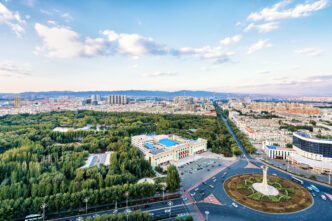Basic services remain unrecovered in Myanmar following a devastating earthquake that struck three weeks ago, with emergency workers facing ongoing challenges such as aftershocks and resource shortages. The United Nations Office for the Coordination of Humanitarian Affairs reported that daily aftershocks continue to disrupt central Myanmar, hindering relief efforts and stretching limited resources.
On March 28, twin earthquakes with a magnitude of 7.7 impacted Myanmar, primarily affecting areas around Mandalay, the nation’s second-largest city. The destruction extended across six regions, including the capital, Naypyitaw, leaving communities without essential services such as safe shelter, clean water, electricity, health care, and sanitation.
The earthquakes have compounded an already severe humanitarian crisis in Myanmar, where civil conflict has displaced over 3 million people and left nearly 20 million in need of aid. A state-run newspaper reported that the earthquake’s death toll has reached 3,726, with 5,105 injuries and 129 individuals still missing. International assistance included 1,975 rescuers from 25 countries, who helped save 653 people and recover 753 bodies.
Infrastructure damage includes over 65,000 houses and buildings, along with schools, religious sites, hospitals, bridges, and sections of highways. The Myanmar Fire Services Department announced that emergency workers are actively involved in rescue operations, debris clearing, and returning valuables found in rubble to their owners. Recent efforts in Mandalay have recovered two bodies from collapsed structures.
Local rescue teams are focusing on removing debris from larger buildings and aiding survivors, as international teams have largely completed their missions. The United Nations Development Program estimates that around 2.5 million tons of debris need to be cleared, based on satellite data. UN-Habitat is assessing structural damage in collaboration with local engineering experts.
In Naypyitaw, relief efforts have largely ceased, with government buildings still unrepaired. Residents have been clearing debris independently. Senior Gen. Min Aung Hlaing has announced plans to redesign the urban layout of the capital, which was established in 2006. Known for its expansive government buildings and roads, Naypyitaw was developed from a former logging area predominantly occupied by farmers.








